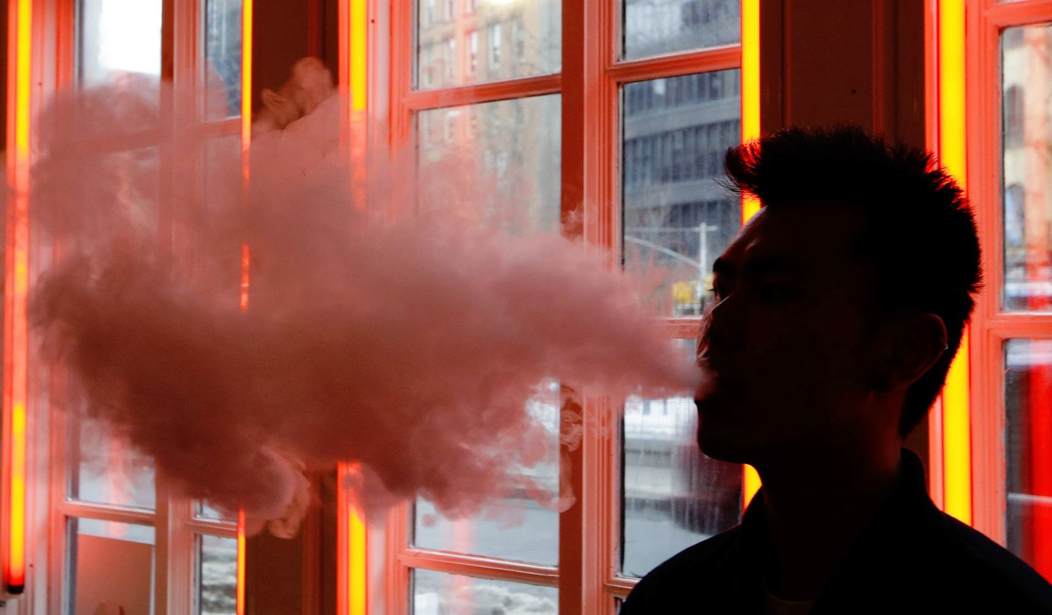The U.S. Food and Drug Administration (FDA) has a lot of work to do on regulating tobacco and vapor products. A week after a federal court ruling required FDA to issue a schedule for the implementation of graphic warnings on cigarette packaging, FDA officials are cracking down on electronic cigarette manufacturers and retailers.
FDA announced the delivery of more than 1,300 warning letters to retailers (mostly convenience stores), and has “issued letters to the manufacturers of the five top-selling national brands” of electronic cigarettes. These letters require manufacturers to “submit to FDA within 60 days plans describing how they will address the widespread youth access and use of their products.” FDA Commissioner Scott Gottlieb said, “Youth use of electronic cigarettes has reached an epidemic proportion.” Unfortunately, the agency’s announcement reinforces how FDA refuses to recognize the overwhelming evidence that vaping is an effective tobacco harm reduction method.
Despite the alarmism from the media and federal agencies, youth smoking has been on a steady decline and youth vaping has been stagnant. In fact, youth vaping dropped significantly in 2016, and remained flat in 2017, according to the Centers for Disease Control and Prevention. Meanwhile, youth combustible cigarette use is at an all-time low, a success that anti-tobacco activists should applaud.
It’s important to note that e-cigarette manufacturers and tobacco companies have invested in anti-youth smoking efforts. The Vapor Technology Association is a national trade association representing“manufacturers, wholesalers, small business owners and entrepreneurs.” Members in the association “have implemented strict standards to prevent youth access to vapor products.” Similarly, it is industry standard to not advertise to minors, and tobacco companies instead are investing tens of millions of dollars in programs aimed at reducing underage tobacco and vaping usage. Not to mention, it is illegal in all 50 states for anyone under the age of 18 to purchase vaping devices.
Recommended
Undeterred by youth usage figures and actions already implemented by tobacco and e-cigarette manufacturers, alarmism has come to the forefront among public health groups. FDA is still demonizing e-cigarettes and vaping devices and turning a blind eye to the widely accepted public health benefits these products deliver to millions of smokers. The Royal College of Physicians (RCP) first published the ill effects related to cigarette smoking in 1962. However, it took two years for the U.S. Surgeon General to issue the “1964 Report on Smoking and Health.”
Ironically, in 2016 RCP determined that the health hazards associated with electronic cigarettes are “unlikely to exceed 5% of the harm [caused by] smoking.” RCP noted that “in the interests of public health it is important to promote the use of e-cigarettes.” It’s disturbing that FDA officials would rely on RCP research of combustible cigarettes but discount its research when determining the safety of vaping devices.
This distrust may be due to the fact that the FDA Center for Tobacco Products is “funded by user fees paid by tobacco manufacturers.” In 2018, total user fees were $672 million. Aside from federal agencies such as FDA, states also rely on combustible cigarette tax revenue and settlement funds from tobacco lawsuits. However, states often don’t use these funds for cessation programs. The Centers for Disease Control and Prevention found that less than 3 percent of the “record $27.5 billion from tobacco taxes and settlements” received by the states in 2018 will be earmarked “on prevention and cessation programs.”
Multiple health groups, including Public Health England, Cancer Research UK, NHS Health Scotland, and the American Cancer Society, have acknowledged the reduced risk of electronic cigarettes. FDA has even noted a “continuum of risk” concerning tobacco products currently on the market. However, FDA has yet to approve a modified risk tobacco product application, or a premarket tobacco production application.
FDA’s press releases are a disservice to 10.8 million vapers in the United States. Due to FDA’s 2016 regulations, e-cigarette manufacturers and retailers are prevented from informing consumers of the reduced harm these products pose to cigarette smokers. The FDA regulations also prohibit any new products from coming to market after August 6, 2018, which restricts e-cigarette manufacturers’ ability to make technological advancements that could mitigate youth smoking.
It’s clear that FDA does not recognize the reduced harm of e-cigarettes and vaping devices. Although FDA claims it is protecting American youth, it appears FDA is more interested in maintaining user fees and cigarette taxes.

























Join the conversation as a VIP Member